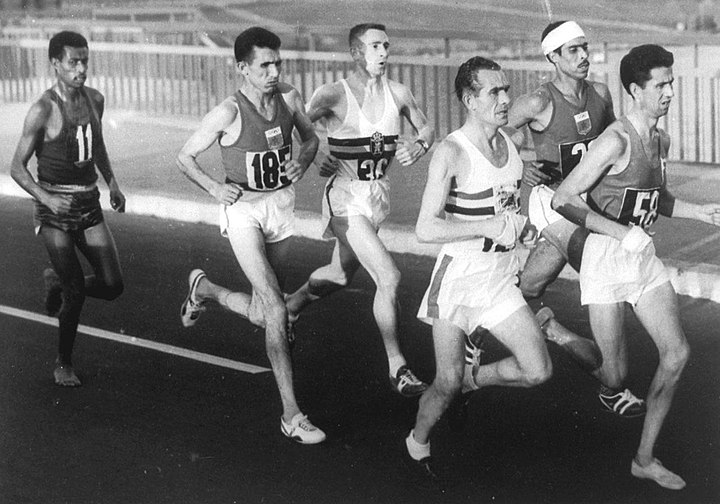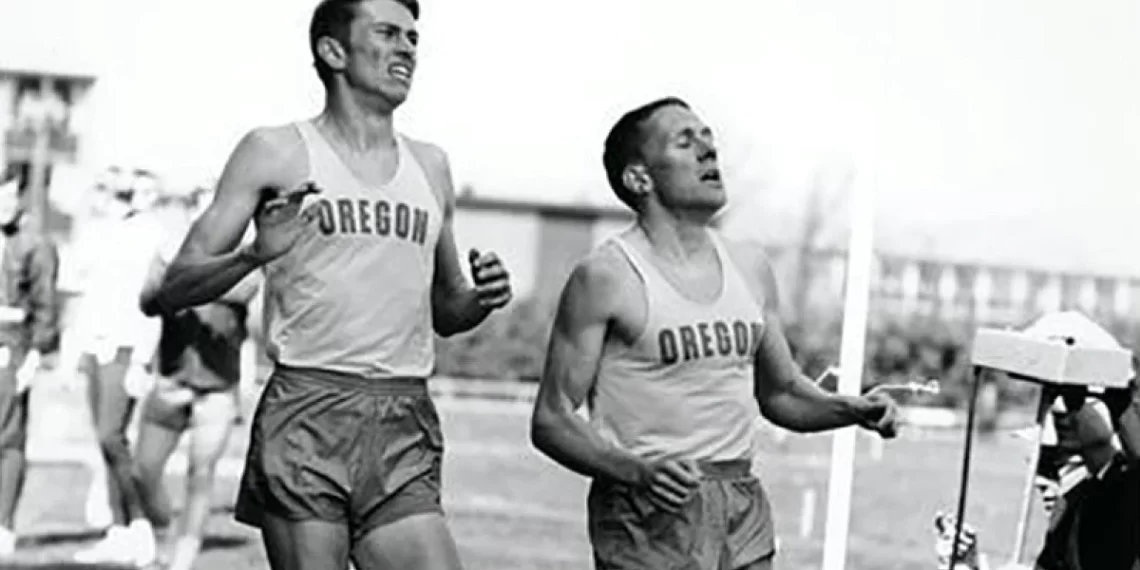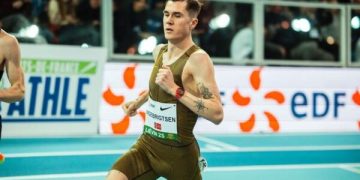Walt Murphy is one of the finest track geeks that I know. Walt does #ThisDayinTrack&FieldHistory, an excellent daily service that provides true geek stories about our sport. You can check out the service for FREE with a free one-month trial subscription! (email: WaltMurphy44@gmail.com ) for the entire daily service. We will post a few historic moments each day, beginning February 1, 2024.
(c)Copyright 2024-all rights reserved. It may not be reprinted or retransmitted without permission.
RelatedPosts
By Walt Murphy’s News and Results Service (wmurphy25@aol.com), used with permission.
Walt Murphy’s News and Results Service (wmurphy25@aol.com)
This Day in Track & Field–April 20
1895–The Penn Relays were born.
https://pennrelays.com/sports/2018/11/2/about-the-relays.aspx
The first Penn Relays was a smash success. Held on April 20, 1895 (the linked article above incorrectly lists the date as April 21), in conjunction with the University’s Spring Handicap Track and Field Games, the meet, until this year, the longest uninterrupted collegiate track meet in the country, was a greater success than hoped for, drawing an attendance of approximately 5,000, the largest track and field crowd to that time in Philadelphia. At the dawn of the 20th century, track and field in the United States was centered around the three large eastern cities of Boston, New York, and Philadelphia, so it is evident that in addition to being the largest track crowd in Philadelphia, it was immediately one of the largest ever in America.
The pre-history of the Penn Relays and the history of relay running as sport began in 1893 at the University of Pennsylvania. While there are earlier examples of relay races having been run, nowhere else did the concept take hold and flourish. In fact, the history of relay racing cannot be told without linking it to the Penn Relay Carnival.
When the University Track Committee, chaired by Frank B. Ellis ‘93, looked for ways of adding interest to their 1893 spring handicap meet, they struck on the idea of a relay, four men each running a quarter mile in succession. The idea created enough interest that a team from Princeton was invited to contest the event. Held at the end of the meet on May 12, the Princeton team of J.A. Chapman, George McCampbell, Isaac Brokow and Theodore Turner pulled away in the homestretch to beat Penn by eight yards with a time of 3:34.0.
The following year, Penn exacted its revenge against the Princeton team on the University Field track, located at 37th and Spruce Streets, where the Quad Dormitory is now. Interest in the first two years’ races was such that the committee decided to sponsor a relay meet in 1895 with hopes of reviving sagging interest in Penn track. The first Penn Relays also dedicated Franklin Field, built on the same ground it occupies today, but under a different guise. The only grandstand at the time was a wooden single-tiered bleacher on the South side of the field, along what is now the sprint straightaway.
The facilities were rudimentary, even for the period, but the potential for one of the best athletic facilities in the country existed. The track, which partially surrounded a combination of baseball and football fields, was not yet completed. The top layer of cinders had not arrived in time, leaving the surface a rough bed of clinkers. Permanent dressing facilities were also lacking, but tents were set up around the track’s perimeter, and were used yearly until Weightman Hall was built in 1904.
The festive atmosphere provided by the tent camp was responsible for the term “Carnival,” which was officially adopted as part of the meet’s name in 1910. Today, the carnival atmosphere still exists, both inside Franklin Field and the surrounding Carnival Village, and outside on the nearby streets.
The first year’s schedule included nine relay events, four for high schools and prep schools, four for colleges, and the college championship. All were held at 4×440 yards, what became the classic mile relay. In each race there were but two teams, and Harvard defeated Penn with at time of 3:34.4 to win the first Carnival championship. The other teams competing in the inaugural meet were Cornell, Columbia, Lafayette, Lehigh, Rutgers, Swarthmore, College of the City of New York and New York University among the colleges, and Central High School of Philadelphia, Central Manual Training of Philadelphia, Haverford School, Cheltenham Military Academy, Germantown Academy, William Penn Charter, Episcopal Academy and DeLancey School among the high schools and prep schools.
1936— The last of Newton’s hills on the Boston Marathon course was named “Heartbreak Hill” by Boston Globe reporter Jerry Nason. When John A. Kelley caught eventual champion Ellison “Tarzan” Brown on the Newton hills, Kelley made a friendly gesture of tapping Brown on the shoulder. Brown responded by regaining the lead on the final hill, and as Nason reported, “breaking Kelley’s heart.” (Kelley faded to 5th-2:38:49)
500,000 spectators lined the course.
NY Times(for subscribers):
http://www.infoplease.com/spot/marathoncourse.html
1957—The University of Texas, coached by Hall-of-Famer Clyde Littlefield, set a World Record of 39.7 in the 440-yard relay at the Kansas Relays with a lineup of Wallace Wilson, Eddie Southern, Hollis Gainey, and Bobby Whilden. It was the school’s third straight WR, having run 40.5 in 1954 and 40.2 in 1955 (with Whilden on the anchor).
Southern was the silver medalist in the 400-meter hurdles at the 1956 Olympics while Whilden has become a legend in Masters competiton. 86 at the time, he set a World Age-Group Indoor Record of 9.63 in the 60-Meters at the 2022 U.S. Masters Indoor Championships at NY’s Armory

1964—Belgium’s Aurele Vandendriessche won his 2nd straight Boston Marathon in 2:19:59. A great documentary on the race, featuring the late Yale and Harvard professor (and noted author—“Love Story”) Erich Segal, has recently been found and posted on YouTube. It’s a “Must-View” piece of history. Vandendriessche competed in 3 Olympic marathons (1956-1964), finishing 7th in Tokyo in 1964.
5th in the race was noted running historian Hal Higdon (2:21:55), and 7th was John Kelley (the “Younger”) in 2:27:23.
Documentary: http://www.youtube.com/watch?v=69nWnL2mxbs
http://omnirunning.com/boston-marathon-1964/
Segal: http://en.wikipedia.org/wiki/Erich_Segal
Past Winners: http://en.wikipedia.org/wiki/List_of_winners_of_the_Boston_Marathon
Vandendriessche: https://www.olympedia.org/athletes/65309
1968—Following coach Bill Bowerman’s instructions prior to the dual meet with Washington State, Oregon’s Arne Kvalheim let Gerry Lindgren build an early lead in the 2-mile with his usual front-running tactics before gradually closing the gap. Passing Lindgren on the final turn, Kvalheim went on to win with the Collegiate Record time of 8:33.2.
https://www.letsrun.com/forum/flat_read.php?thread=451360























